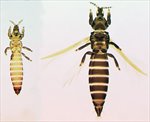
manicatus male & female
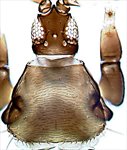
manicatus head & pronotum

manicatus antenna
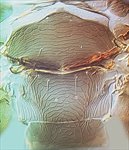
manicatus meso & metanota
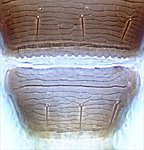
manicatus tergites VII-VIII
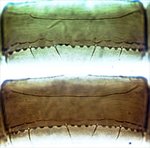
manicatus sternites III-IV
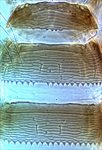
aculeatus tergites

aculeatus sternites

manicatus fore wing
Generic diagnosis
Female macropterous. Head smaller than pronotum, variably prolonged in front of eyes; compound eyes with 5 pigmented facets; maxillary palps 3-segmented; ocellar setae I present; eyes large; four pairs of postocular setae. Antennae 8-segmented, segment I without paired dorso-apical setae, II usually projecting laterally, III and IV with sense-cones simple. Pronotum trapezoidal, with two pairs of posteroangular and five to seven pairs of posteromarginal setae. Mesonotum with median pair of setae situated medially; campaniform sensilla present anteromedially. Metanotum with median pair of setae situated medially; campanifom sensilla present. Fore wings slender, first vein with long gap in setal row, two setae distally; second vein with four or five setae arranged irregularly; clavus usually with four veinal and one discal setae; posterior fringe cilia wavy. Prosternal ferna divided medially; basantra fused with ferna, without setae; prospinasternum narrow and transverse. Mesosternum with sternopleural sutures reaching anterior margin; endofurca without spinula. Metasternal endofurca without spinula. Tarsi 2-segmented. Tergites without ctenidia; I–VIII each with broad irregularly toothed craspedum; VIII without comb; IX with two pairs of campanifom sensilla, MD setae present; X with median split complete. Sternites without discal setae or craspeda; sternites III–VIII with three pairs of posteromarginal setae, II with two pairs.
Male micropterous but similar to female; ocelli absent; tergite X without median split; sternites III–VII usually with large rounded pore plate.
Biological data
All species of Arorathrips and Chirothrips breed within grass flowers, with each larva pupating separately within a single developing caryopsis. Larvae of species in these two genera have reduced legs, and presumably cannot move between individual flowers.
Distribution data
In contrast to Arorathrips, this genus is essentially Holarctic but with several species endemic to the Afrotropical region. However, the validity of some species described in the manicatus-group have been questioned (Minaei & Mound, 2010).
Nomenclatural data
Thrips (Chirothrips) Haliday, 1836: 444. Type species Thrips (Chirothrips) manicata Haliday, 1836, by monotypy.
There are 42 species currently listed in this genus (ThripsWiki, 2020), and five of these are recorded from China. Mirab-balou et al., (2011) also listed the North American species cuneiceps Hood from "Manchuria", but attributed this record incorrectly to a report on insects of the South Pacific published in New Zealand.
aculeatus Bagnall, 1927: 567.
africanus Priesner, 1932: 46.
choui Feng & Li, 1996: 175.
manicatus (Haliday, 1836: 444). (Thrips, Chirothrips)
tenuicauda zur Strassen, 1963: 397.
Relationship data
Thripidae sub-family Thripinae: this is a diverse group involving more than 230 genera. Chirothrips is closely related to the genus Arorathrips, but the species all have the mesosternal furca with well developed lateral lobes, and the sternal furcal invaginations close together medially (Nakahara & Foottit, 2012).
References
Mirab-balou M, Tong X., Feng JN & Chen XX (2011) Thrips (Insecta: Thysanoptera) of China. Check List (Journal of Species Lists and Distribution) 7 (6): 720–744.
Minaei K & Mound LA (2010) Grass-flower thrips of the genus Chirothrips (Thysanoptera: Thripidae), with a key to species from Iran. Zootaxa 2411: 33-43.
Nakahara S & Foottit RG (2012) Review of Chirothrips and related genera (Thysanoptera: Thripidae) of the Americas, with descriptions of one new genus and four new species. Zootaxa 3251: 1–29.
ThripsWiki (2020) ThripsWiki - providing information on the World's thrips. <http://thrips.info/wiki/Main_Page>